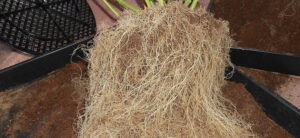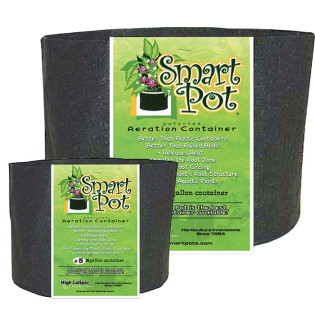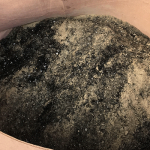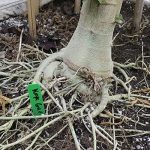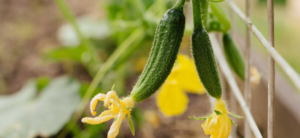
While you may prune and train your plants above ground to promote healthy, explosive growth, are you aware that root pruning can increase yield as well?
While this gardening technique is certainly less commonplace, it is sometimes an essential practice - especially in hydroponics. But sometimes, soil grown plants need their roots pruned as well!
Read on to discover everything there is to know about root pruning, including what exactly it entails, why its important, how to do it, and more!
What Is Root Pruning?
Root pruning is exactly as it sounds - pruning the roots of your plant. Just as the foliage of your plants can sometimes get out of control and become problematic, so too can your roots.
To remedy this, you can either use a garden pot that air prunes your roots, or manually prune them yourself. We’ll talk more about how to prune your roots in a moment, but let’s first explain some of the benefits!
Why Should You Root Prune Plants?
Root pruning isn’t something you necessarily need to do with all your plants every grow cycle. Really, this is something you can save for your root bound plants.
If your plants become root bound, they won’t have access to the nutrients and water they need to stay healthy and grow to their full genetic potential.
In hydroponics systems, root pruning may be a routine task for you. If you grow hydroponically, you are likely aware of just how explosively roots can grow in a DWC, aeroponic, or ebb-and-flow system.
In some cases, the root mass can become so prolific it impedes the performance of your system. In these instances, trimming up the roots is a necessary task. Here are the full list of benefits of root pruning:
- Prevent root binding/root circles in traditionally grown plants, ensuring optimal nutrient and moisture uptake.
- Prevent issues with hydroponically grown plants interfering with system performance.
- Increase lateral root growth and small branching by pruning apical or runner roots.
By properly root pruning plants, you’ll ensure optimal plant growth/yield while avoiding some of the potential problems associated with overgrown roots. Let’s talk technique.
Techniques For Root Pruning Hydroponic Plants
Techniques for root pruning hydroponic plants will definitely differ from traditional soil-grown plants in that this is a more routine maintenance procedure.
Because you have such easy access to your roots, you can prune them without stressing the plant too much or making too much work for yourself.
There are different protocols for different stages of plant growth. Some growers recommend starting to root prune your hydroponic plants once there is some decent root development.
At this early stage, it’s as simple as snipping apical roots that are dominating the root mass, to shorten them up to around the same length as adjacent roots.
During vegetative growth, you can continue periodically prune the most obtrusive roots to create an even root ball.
Note: never prune more than 10-15% of the total root mass. This will stress the plant out too much, and stunt growth.
Once you start to flower, root pruning should cease, as you don’t want to stress the plant out and take energy away from bud development. But if it’s an absolute necessity, you can prune outer roots, taking no more than 5-10% of total root mass.
As with all forms of plant care or plant training, be sure to disinfect and sterilize any tools you use when cutting any part of your plant.
Techniques For Root Pruning Traditional Soil Plants
When it comes to root pruning soil plants, the strategy is a bit different. Obviously, this is going to be a more involved process as your roots are in the soil and you can’t just lift the lid to check them out.
Instead, you’ll really only want to prune your roots when your plants become root bound. This is a good way to remedy the issue and prevent it from happening again.
You will remove the plant from the pot it’s growing in, and remove as much of the media as possible so you have access to the root mass. Cut the lower third of the root ball, and try and detangle the roots as much as possible.
You should be left with a healthy, untangled root ball. You can then transplant into a fresh container (a root bound plant usually indicates an undersized pot) with fresh grow media.
Give a healthy watering and feeding to try and help with the stress.
What Is Air Pruning?
Instead of manually root pruning plants, you can prevent root balls or circles from occuring in the first place by air pruning your roots.
This is only possible in certain pots, such as smart pots or fabric pots. Unlike plastic pots, these are very porous, and air can get through the wall of your pot to your roots.
This air prunes the roots, and discourages them from continuing to grow and becoming tangled.
Consider growing in airpots
Airpots are a specific type of garden pot that encourages air pruning. The holes in the sides not only make these a unique garden pot, they promote healthy root growth by preventing root circles and binding.
If you grow in airpots, you won’t have to manually root prune. These garden pots are a bit more expensive, but they save you tons of time and effort, while helping you cultivate huge, high-quality plants.
Root Pruning Mother Plants

If you keep mother plants that you constantly strip clones from, it’s likely you’ll need to continually root prune her.
If not, the roots will just keep growing. While most of us keep our mother plants in huge garden pots, or even a large hydroponic system, odds are that the root mass will outgrow the pot.
So, if you have a mother plant you’ve been keeping for 3-6 months or longer, you should check on the roots!
Final Thoughts On Root Pruning
In summary, root pruning isn’t something you will have to do to every soil plant, every grow cycle.
Instead, keep an eye on your root health and if you sense your roots are binding, circling, or tangling, you should try root pruning and transplanting into a new, larger container.
If you are growing hydroponically, you should constantly monitor your roots. If certain root branches are dominating the plant, trim them up to the rest of your root mass.
These techniques and best practices we’ve shared will go a long way in ensuring optimal root health. And, as you may already know, better root development means a better, heavier harvest!





